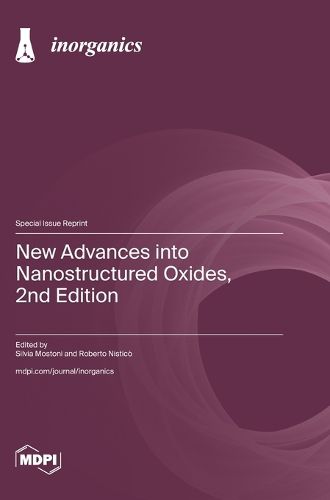Readings Newsletter
Become a Readings Member to make your shopping experience even easier.
Sign in or sign up for free!
You’re not far away from qualifying for FREE standard shipping within Australia
You’ve qualified for FREE standard shipping within Australia
The cart is loading…






This title is printed to order. This book may have been self-published. If so, we cannot guarantee the quality of the content. In the main most books will have gone through the editing process however some may not. We therefore suggest that you be aware of this before ordering this book. If in doubt check either the author or publisher’s details as we are unable to accept any returns unless they are faulty. Please contact us if you have any questions.
In recent years, inorganic oxidic nanomaterials have been extensively investigated for their outstanding properties that allow for their use within a large variety of emerging fields of interest, ranging from (photo)catalysis to the development of functional nanocomposites. Nanoscopic metal (eventually mixed) oxides are often fabricated following soft-chemistry approaches, characterized by the possibility of favoring specific morphologies, particle dimensions, and surface porosities through different synthetic methods and templating processes. In this context, surface functionalities and reactivity play a major role in the determination of the final properties of nanomaterials. For this reason, further surface functionalization with specific chemical moieties is often recommended to extend their field of application. This Special Issue aims at extending the comprehension of the mechanisms involved in the synthesis and templating of inorganic oxidic nanomaterials, as well as in their surface functionalization and reactivity. Additionally, this Special Issue aims at increasing the knowledge on the latest advances of these systems in (photo)catalysis; environmental clean-up processes; energy storage; controlled transport and/or release; biomedicine; sensing; and the development of smart-materials, stimuli-responsive materials, and nanocomposites. Furthermore, particular attention is dedicated toward studies describing alternative ecofriendly preparation methods.
$9.00 standard shipping within Australia
FREE standard shipping within Australia for orders over $100.00
Express & International shipping calculated at checkout
This title is printed to order. This book may have been self-published. If so, we cannot guarantee the quality of the content. In the main most books will have gone through the editing process however some may not. We therefore suggest that you be aware of this before ordering this book. If in doubt check either the author or publisher’s details as we are unable to accept any returns unless they are faulty. Please contact us if you have any questions.
In recent years, inorganic oxidic nanomaterials have been extensively investigated for their outstanding properties that allow for their use within a large variety of emerging fields of interest, ranging from (photo)catalysis to the development of functional nanocomposites. Nanoscopic metal (eventually mixed) oxides are often fabricated following soft-chemistry approaches, characterized by the possibility of favoring specific morphologies, particle dimensions, and surface porosities through different synthetic methods and templating processes. In this context, surface functionalities and reactivity play a major role in the determination of the final properties of nanomaterials. For this reason, further surface functionalization with specific chemical moieties is often recommended to extend their field of application. This Special Issue aims at extending the comprehension of the mechanisms involved in the synthesis and templating of inorganic oxidic nanomaterials, as well as in their surface functionalization and reactivity. Additionally, this Special Issue aims at increasing the knowledge on the latest advances of these systems in (photo)catalysis; environmental clean-up processes; energy storage; controlled transport and/or release; biomedicine; sensing; and the development of smart-materials, stimuli-responsive materials, and nanocomposites. Furthermore, particular attention is dedicated toward studies describing alternative ecofriendly preparation methods.